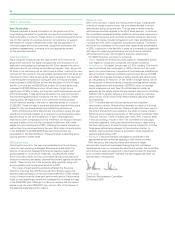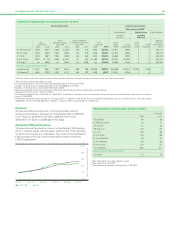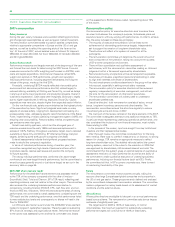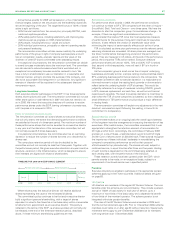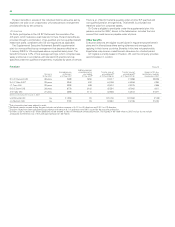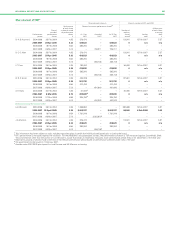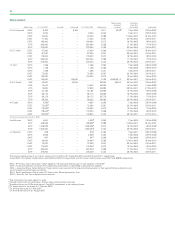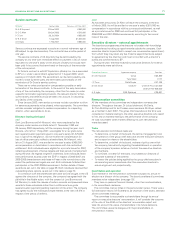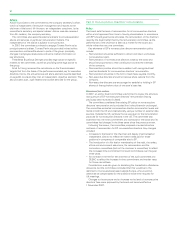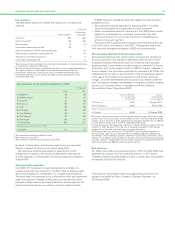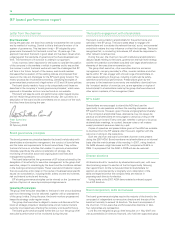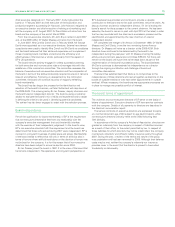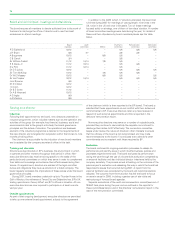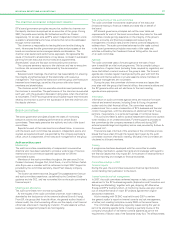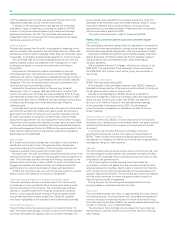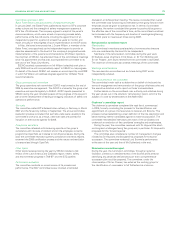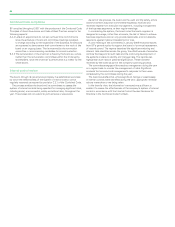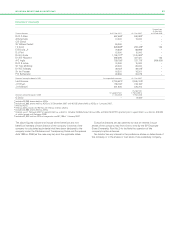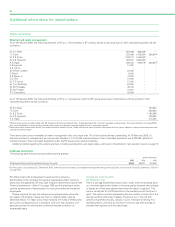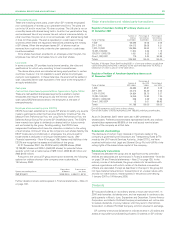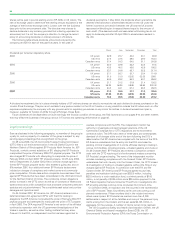BP 2007 Annual Report Download - page 76
Download and view the complete annual report
Please find page 76 of the 2007 BP annual report below. You can navigate through the pages in the report by either clicking on the pages listed below, or by using the keyword search tool below to find specific information within the annual report.
BP board performance report
Letter from the chairman
Dear Shareholder
During the past year, the board has carefully considered the role it plays
and its method of working. Central to this is the board’s review of its
system of governance. This has been timely – BP adopted its prior
governance framework for the board more than 10 years ago. This
approach has stood the board in good stead and has been robust when
judged against the standards of governance that have developed over
time. This framework will continue to underpin our approach.
It has, however, been important for the board to consider the position
of the company in the markets in which it operates and to ensure that
the manner in which the board works will meet the challenges that BP
will face in the future. As part of the review, each board member
discussed their evaluation of the existing policies and proposed their
views on the role and challenges for the BP board going forward. The
review process also involved benchmarking, identifying examples of
governance best practice and a legal review of US and UK board policies.
The board clearly needs to focus on its unique tasks and these are
described in the company’s ‘board governance principles’, which were
approved in November and can now be found on our website.
The board will keep its work and performance under regular review
and will revisit the governance principles annually. Set out below is a
description of the board and its committees and an account of the work
that they have done during the year.
Peter Sutherland
Chairman
22 February 2008
Board governance principles
The board governance principles describe the board’s relationship with
shareholders and executive management, the conduct of board affairs
and the tasks and requirements for board committees. They outline
the board’s focus on activities that enable it to promote shareholders’
interests, specifically the active consideration of strategy, the
monitoring of executive action and ongoing board and executive
management succession.
The board believes that the governance of BP is best achieved by the
delegation of its authority for executive management to the group chief
executive, subject to monitoring by the board and the limitations defined
in the board governance principles. These ‘executive limitations’ require
that any executive action taken in the course of business takes specific
issues into consideration, including health, safety and the environment,
risk and internal controls and financing.
BP’s board governance principles can be viewed on the ‘governance’
section of bp.com at www.bp.com/corporategovernance.
Operating the principles
The group chief executive describes to the board in the annual business
plan how the strategy is to be delivered, together with an assessment
of the group’s risks. During the year, the board monitors progress and
keeps the strategy under regular review.
The group chief executive is obliged to review and discuss with the
board all strategic projects or developments and all material matters
currently or prospectively affecting the company and its performance.
The board governance principles further set out how the group chief
executive’s performance will be monitored during the year.
The board’s engagement with shareholders
The board is accountable to shareholders for the performance and
activities of the BP group. The board takes steps to engage with
shareholders and to evaluate the relevant financial, social, environmental
and ethical matters that may influence or affect the business. The board
recognizes that, in conducting its business, BP should be responsive to
other relevant constituencies.
During the year, the chairman met with institutional shareholders to
discuss issues relating to the board, governance and high-level strategy
and the remuneration committee consulted with larger shareholders on
elements of the executive remuneration plan.
The group chief executive, other executive directors and senior
management, company secretary’s office, investor relations and other
teams within BP also engage with a broad range of shareholders on
wider issues relating to the group, including in particular its safety,
operations and financial performance. Presentations given by the
company to the investment community are available to download from
the ‘investors’ section of www.bp.com, as are speeches on topics of
broad interest to shareholders made by the group chief executive and
other senior members of the management team.
BP’s AGM
Shareholders are encouraged to attend the AGM and use the
opportunity to ask questions and hear the resulting discussion about
BP’s performance. However, given the size and geographical diversity
of the company’s shareholder base, attendance may not always be
practical and shareholders are encouraged to use proxy voting on the
resolutions put forward. Every vote cast, whether in person or by proxy
at shareholder meetings, is counted, because votes on all matters
except procedural issues are taken by a poll.
Copies of speeches and presentations given at the AGM are available
to download from the BP website after the event, together with the
outcome of voting on the resolutions.
Both the chairman and board committee chairmen were present
during the 2007 AGM. Board members met shareholders on an informal
basis after the main business of the meeting. In 2007, voting levels at
the AGM showed a slight decrease to 61%, compared with 64% in
2006. It is proposed that the AGM in 2008 will also be webcast.
Director elections
All directors stand for re-election by shareholders each year, with new
directors being subject to election at the first opportunity following
their appointment. All the names submitted to shareholders for
election are accompanied by a biography and a description of the
skills and experience that the company feels are relevant in
proposing each director for election.
Voting levels at the 2007 AGM demonstrated continued support
for all BP directors.
Board composition, skills and renewal
The board governance principles require the majority of the board to be
composed of independent non-executive directors and the size of the
board not normally to exceed 16 directors. The board is composed of
the chairman, 10 non-executive and five executive directors; in total,
four nationalities are represented.
Lord Browne resigned as group chief executive on 1 May 2007 and
was succeeded by Dr Anthony Hayward, who had been appointed group
74


